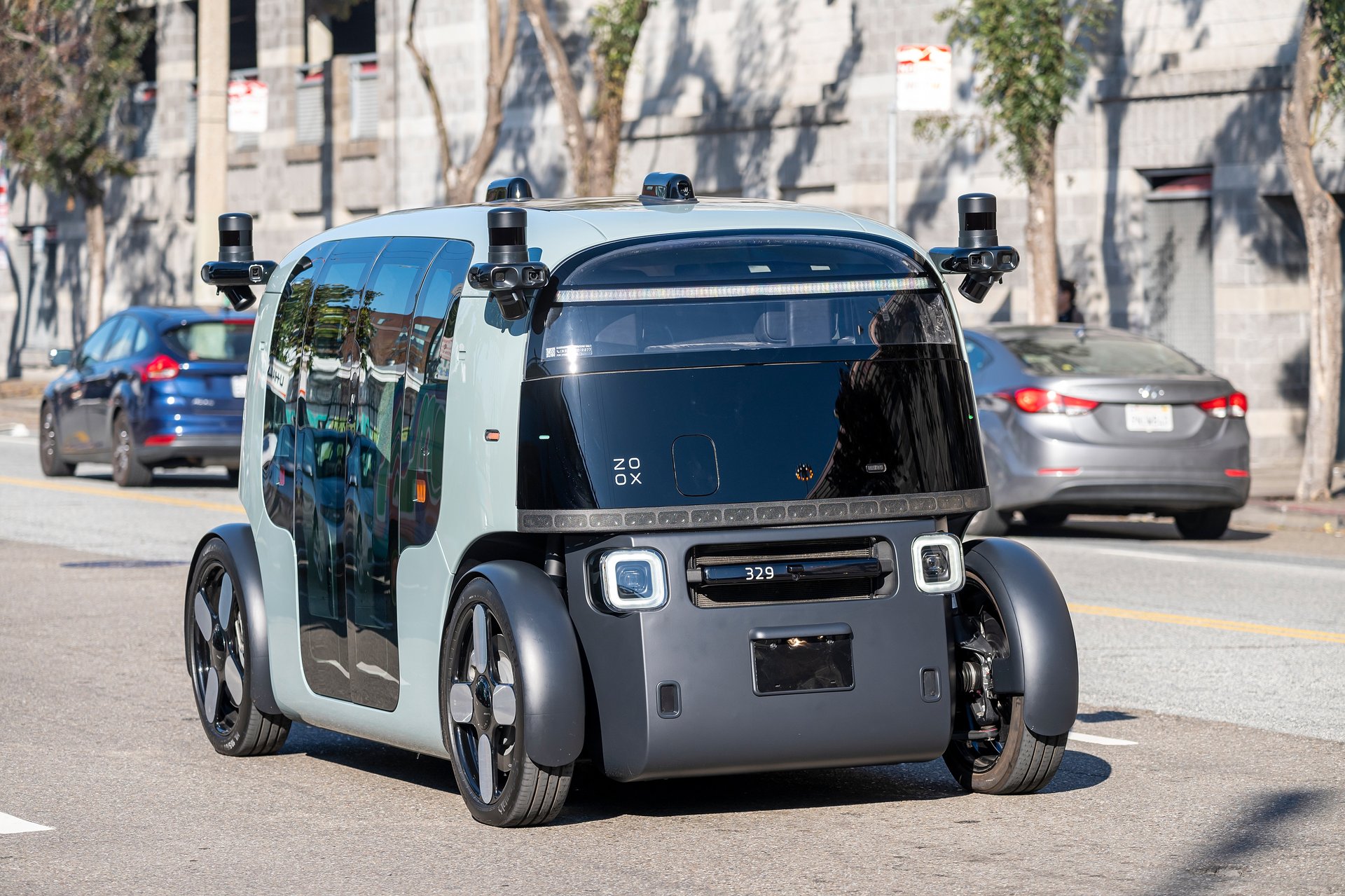Tesla and Waymo robotaxi competitor Zoox takes a big step forward
The plant will make 10,000 cars annually, taking the self-driving race up a gear.

Getty Images / Bloomberg
Zoox—Amazon’s autonomous vehicle subsidiary—has officially launched its inaugural robotaxi production facility in Hayward, California, the company announced Wednesday.
Suggested Reading
At 220,000 square feet—the equivalent of 3.5 American football fields—the plant will be capable of assembling over 10,000 cars annually.
Related Content
The Hayward facility marks a pivotal moment for Zoox as it transitions from limited testing to large-scale production—and primes Amazon to vie head-to-head with the established players in the robotaxi arena.
More than 20 Zoox prototypes are currently undergoing testing across U.S. cities, as the company prepares to launch its commercial service in Las Vegas later this year. San Francisco is among its test cities, and it plans to onboard public riders here first.
"This expansion, plus the anticipated demand once rides open up to the general public, and additional market entrances in the coming years warrants this increase in robotaxi production," Zoox said in a statement.
What sets Zoox apart from its rivals is its bespoke vehicle design—animated more like “gondolas on wheels.” The cars forsake conventional steering wheels and pedals, a stark departure from retrofitted models used by Waymo and Tesla.
While the plant notches Zoox's position in the robotaxi race up a gear, it's still miles behind its competitors.
Alphabet’s Waymo, was the first to put a fully driverless taxi on the road. It operates a fleet in multiple U.S. cities, including Phoenix, San Francisco, and parts of Los Angeles and Austin. They’re coming to Atlanta, Miami, Washington, D.C., and even Tokyo soon. As of mid-2025, Waymo is providing millions of driverless rides per quarter, with consistent safety records and publicly available data.
Tesla is also poised to launch its robotaxi service on June 22, starting with modified Model Y vehicles, before later introducing a wheel-free “Cybercab.” Thus, this month's launch isn’t a fully autonomous debut. The Model Y vehicle will be equipped with the company’s full self-driving (FSD) software, and each will be monitored by human operators ready to intervene remotely if things go sideways. This falls short of CEO Elon Musk’s vision for fully driverless Teslas commanded by AI alone.
“The overwhelming focus is on solving full self-driving. That’s essential. It’s really the difference between Tesla being worth a lot of money or worth basically zero,” Musk said in 2022.
However, for all three companies, obstacles persist on the road to a driverless future. Headwinds range from high production costs and regulatory red tape, to federal probes into safety incidents. For example, Zoox issued a voluntary software recall following a non-fatal crash in Las Vegas last month.